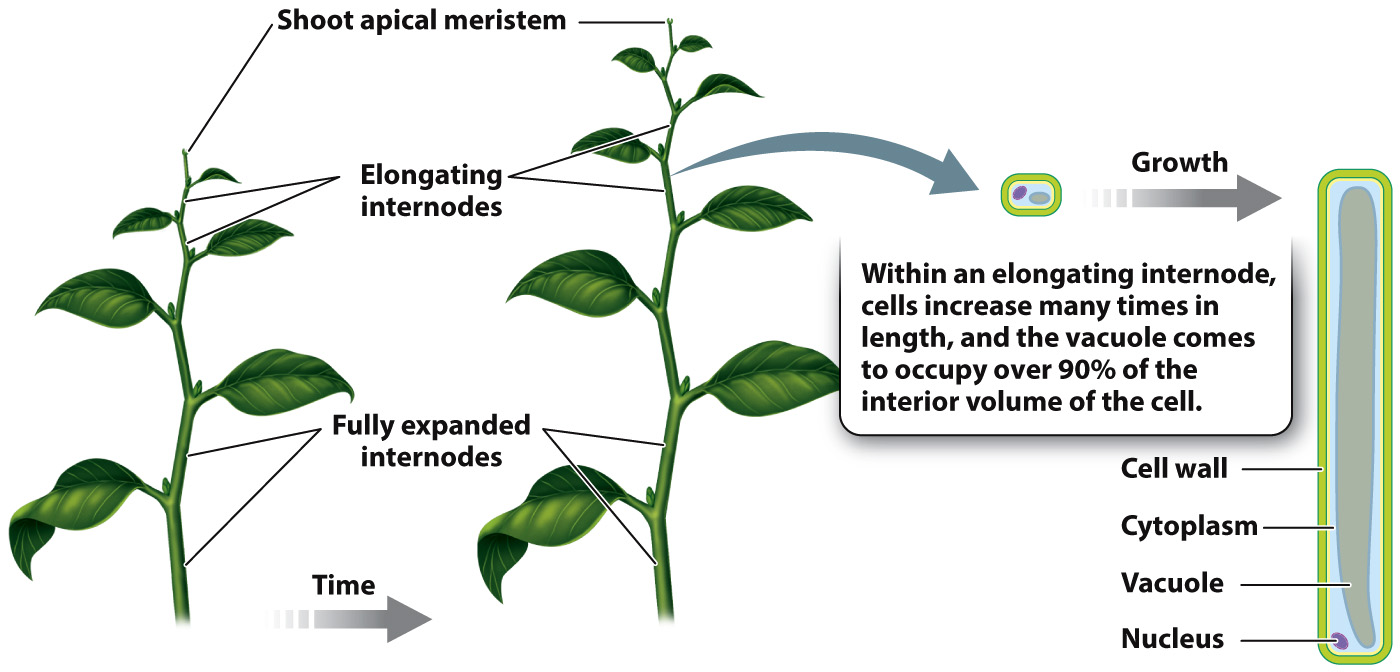Stem elongation occurs just below the apical meristem.
In animals, cell division and cell enlargement typically go hand in hand. In plants, most of the increase in cell size occurs after cell division is complete. Cells that are too far from the shoot tip to express meristem identity genes cease to divide, yet they continue to grow. Most of the elongation of stems takes place in the internodes located immediately beneath the shoot apical meristem (Fig. 31.3). The increase in cell size that occurs in this region is impressive. If all of the cells in the stem of a 100-

Within an elongating internode, each cell grows many times more in length than in width. The reason is the orientation of the cellulose molecules, which are primarily wrapped around the cell perpendicular to the axis of the stem rather than parallel with it. Because cellulose is very strong, having a tensile strength similar to that of steel, cells expand more easily in length than in girth. The large central vacuole that characterizes mature plant cells forms during cell elongation. In fact, most of the increase in cell volume is due to the uptake of water and solutes that fill the vacuole. This explains in part why plant growth is markedly reduced during periods of drought.
As we move even farther from the shoot tip, cells reach their final size and complete their differentiation into mature cell types. This organization into successive zones of cell division, cell elongation, and cell maturation allows stems to grow without any predetermined limit to their length.
Once cells have matured, they no longer expand. Thus, during the upward growth of the shoot, it is the production and elongation of cells at the shoot tip that lift the meristem ever higher into the air. Imagine that, as a 10-